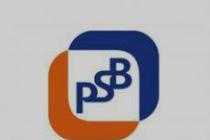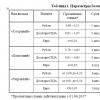For accounting purposes, balance sheet and off-balance sheet accounts. The first ones are maintained to reflect cash and non-cash money, raised funds, settlements, income and expenses, profits and losses.
Off-balance sheet accounts in budgetary institutions are opened to account for:
- material assets (MT), which are not their property, but are in temporary use (for example, fixed assets rented or free of charge; objects taken for processing or for safekeeping, etc.);
- BSO, vouchers to sanatoriums, holiday homes;
- obligations awaiting fulfillment.
Off-balance sheet accounts in the budget: general provisions
Budgetary accounting of MCs on the balance sheet is carried out in a simple way: receipts are subject to reflection on the debit of accounts, disposals - on credit. Corresponding records are not used when using them. Budgetary organizations may open additional off-balance sheet accounts to collect the information needed to management accounting And internal control safety of property.
Accounting for property assets on the balance sheet is carried out using the same primary documents and registers that are used in accounting for MC on the balance sheet. Inventory off-balance sheet funds carried out in the same way as for objects on balance sheet accounts.
Off-balance sheet account 01 in budget accounting
Used to account for fixed assets (fixed assets) received under lease agreements or free of charge with the right to operate without being assigned to operational management.
For the celebration, the cultural institution rented costumes. According to the contract, the lessor gave 5 suits for two-month use. Sum rent amounted to 12,500 rubles. After the holiday, the costumes were returned. Off-balance sheet account 01 was used in accounting:
- property objects were received for rent - Dt 01 (RUB 12,500);
- the leased property was returned - Kt 01 (RUB 12,500).
The basis for the operations was the lease agreement and the acceptance certificate.
Off-balance sheet account 04 in a budget institution
Budgetary organizations can write off debts recognized as unrealistic for collection, reflecting them on the balance sheet. To account for this type of debt, off-balance sheet account 04 written off debt of insolvent debtors is used (clause 339 of Instruction No. 157n). It is necessary to monitor the possibility of debt repayment. If collection resumes or funds are received to repay the debt, the debt is written off.
Let's look at a practical example.
Limitation period for debt in the amount of RUB 4,570. expires on November 25, 2017. By order of the director, it must be written off on the basis of documents confirming the recognition of the debtor as insolvent. The following entries must be made in accounting using off-balance sheet account 04:
- write-off of debt recognized as unrealistic for collection - Dt 2,401 20,273 Kt 2,206 31,000 (RUB 4,570);
- simultaneously accounting for debt on the balance sheet - Dt 04 (RUB 4,570);
- account closure – Dt 2,401 30,000 Kt 2,401 20,273 (RUB 4,570).
Let’s say that in December 2017, the debtor returned the money given to him in advance for the supply of materials. The debt should be restored as follows:
- restoration of debt on accounts – Dt 2,401 20,273 Kt 2,206 31,000 (RUB 4,570);
- simultaneously writing off debt – Kt 04 (RUB 4,570)
Off-balance sheet account 07 in budget accounting
It records two types of MCs:
- prizes, cups, banners intended to reward the winners throughout the entire time they are in budgetary organization according to conditional valuation;
- souvenirs and valuable gifts at the cost of their acquisition.
Let's look at a practical example.
The sports institution purchased valuable gifts to be used as prizes for competition winners for RUB 26,500. Based on the results of the competition, the athletes received gifts. Transactions on their purchase and delivery should be reflected as follows:
- acquisition costs – Dt 4,401 10,290 Kt 4,302 29,000 (RUB 26,500);
- cost of valuables on the balance sheet – Dt 07 (RUB 26,500);
- payment for purchased MCs for gifts - Dt 4,302 29,000 Kt 4,201 11,000 (RUB 26,500);
- debiting donated prizes from the off-balance account – Kt 07 (RUB 26,500).
09 off-balance sheet account in the budget
The account is used to account for spare parts for vehicles issued instead of worn parts. This is how the use of spare parts is controlled (clause 349 of Instruction No. 157n). The specific list of MCs is determined in accounting policy organizations.
Parts are indicated on the account at the time they are removed from the balance sheet for repair work on transport. Accounting is maintained for the entire period of their operation as part of the vehicle. Disposal is carried out according to the acceptance certificate of the repair work performed.
17 and 18 off-balance sheet accounts
These off-balance sheet accounts in budgetary institutions are used when money enters and leaves the accounts.
Off-balance sheet account 17 is intended to account for receipts from:
- budget (federal, regional, municipal);
- GRBS.
Account 18 is used for the disposal of these funds and the restoration of such disposals.
Off-balance sheet account 20 in budget accounting
Designed to account for amounts for which no claims were made and which were not confirmed by inventory during the period limitation period from the time the debts were written off.
The write-off is carried out by decision of the inventory commission in the manner determined by the GRBS.
Off-balance sheet account 21
It is used when calculating fixed assets with a value not exceeding 3,000 rubles, except for real estate and library objects (clause 373 of Instruction No. 157n).
Fixed assets on an off-balance sheet account in the budget are taken into account according to the primary document, which confirms their entry according to conditional valuation or according to book value depending on the order provided accounting policy budgetary organization.
Movements within the institution of fixed assets on off-balance sheet accounts are shown by primary documentation. For these purposes, the financially responsible person and (or) warehouse is changed.
Disposal of fixed assets is carried out according to an acceptance certificate or a write-off act at the cost of accepting them for off-balance sheet accounting.
Off-balance sheet account 22
Used when MC is received from the supplier before receiving notification and photocopies of documentation for them. The received property can be used only with the permission of the authorized executive body, GRBS.
Budget institutions also use other off-balance sheet accounts budget accounting: 2-6, 8, 11-16.
Accounting is directly related to reflection business transactions on accounts accounting budgetary institutions. In connection with changes to Instruction No. 157 n and Instruction No. 174 n, the problem of using off-balance sheet accounts for budget accounting is an urgent and pressing issue. Let's consider the main errors and violations made when reflecting the accounting records of budgetary institutions on off-balance sheet accounts.
Major violations in accounting for off-balance sheet accounts.
On off-balance sheet accounts, the institution takes into account (clause 332 of Instruction No. 157 n):
- - values held by the institution, but not assigned to it under the right of operational management;
- - material values, the accounting of which, according to Instruction No. 157, is provided outside of balance sheet accounts
- - obligations awaiting fulfillment, as well as additional analytical data about other accounting objects and transactions carried out with them, necessary for disclosing information about the activities of the institution in the reports it generates.
When conducting an audit and internal control of budget accounting on off-balance sheet accounts, in almost every institution the following violations are encountered, to which accountants need to pay especially close attention. So, let's look at these violations:
- Off-balance sheet accounts 01 “Property received for use” and 25 “Property transferred for paid use (rent)” do not reflect the value of the property transferred or received for rent. Property transferred by a budgetary institution under a lease agreement continues to be listed on the balance sheet of the budgetary institution, since the right of operational management does not pass to the tenant, however, at the cost specified in primary document and on the basis of the transfer and acceptance certificate, the budgetary institution is obliged to reflect this property on off-balance sheet account 25 (for the purpose of safety and accounting of leased property). To account for movable and real estate received by budgetary institutions for rent, account 01 “Property received for use” is intended (paragraphs 333, 334 of Instruction No. 157n).
- Budgetary institutions do not carry out accounting of forms strict reporting. The following correspondence of budget accounting accounts in 2015 is found on the debit of account 0.401.20.226 and the credit of account 0.302.26.660, without reflection on off-balance sheet account 03 “Strict reporting forms”. Also, quite often, strict reporting forms are taken into account as part of other inventories on the account 0.105.36.00, which is also an accounting violation. Let's consider the correct correspondence of budget accounting accounts for 2015 to reflect strict reporting forms using the following example:
Budgetary educational institution An agreement was concluded with the supplier for the purchase of 40 certificate forms for the amount of 600.00 rubles. At the end of the school year, certificates were awarded to students who successfully completed the educational program. - When writing off from the balance sheet accounts receivable (payable) that are recognized as unrealistic for collection, this debt is not reflected and not taken into account on off-balance sheet accounts 04 “Debt of insolvent debtors”, and account 20 “Debt not claimed by creditors”.
- In violation of paragraph 349 of Instruction No. 157 n, the accounting policy of the institution does not include a list of material assets issued in exchange for worn-out vehicles. Also in the accounting there is a write-off of spare parts for vehicles from budget accounting accounts without reflection and accounting on off-balance sheet account 09 “Spare parts for vehicles issued to replace worn-out ones.”
- Due to the widespread use of Federal Law 44 on procurement by budgetary institutions, off-balance sheet account 10 “Securing the fulfillment of obligations” is not taken into account bank guarantee, received as security for the application (execution of the contract).
- On off-balance sheet account 21 “Fixed assets worth up to 3,000 rubles inclusive in operation,” in violation of clause 373 of Instruction No. 157 n, fixed assets worth over 3,000.00 rubles are taken into account.
- An inventory of property and liabilities on off-balance sheet budget accounts is not carried out (in violation of clause 332 of Instruction No. 157n).
- Off-balance sheet accounts reflect transactions without supporting primary documents.
The typical accounting violations considered in the off-balance sheet accounts of a budgetary institution in this article are considered simple at first glance, however, after analyzing the acts of inspectors, these violations are found in almost every inspection act. Accounting services, it is necessary to control not only the order of reflection of transactions in accounting accounts, but also the order and correctness of reflection in off-balance sheet accounts of budget accounting.
Irina Barinova
Methodologist of the service quality control and methodology department
Account 21 “Semi-finished products of own production” is intended to summarize information on the availability and movement of semi-finished products of own production in organizations that maintain separate records of them. In particular, this account can reflect the following semi-finished products manufactured by the organization (with a full production cycle): pig iron in ferrous metallurgy; raw rubber and glue in the rubber industry; sulfuric acid at nitrogen fertilizer plants in the chemical industry; yarn and raw materials in the textile industry, etc.
In organizations that do not maintain separate records of semi-finished products of their own production, these values are reflected as part of work in progress, i.e. on count 20"Primary production".
In the debit of account 21 “Semi-finished products of own production”, as a rule, in correspondence with count 20“Main production” reflects the costs associated with the production of semi-finished products.
The credit of account 21 “Semi-finished products of own production” reflects the cost of semi-finished products transferred for further processing (in correspondence with count 20“Main production”, etc.) and sold to other organizations and individuals (in correspondence with score 90"Sales").
Analytical accounting for account 21 “Semi-finished products of own production” is carried out by storage locations of semi-finished products and individual items (types, grades, sizes, etc.).
Account 21 "Semi-finished products of own production"
corresponds with accounts
| by debit | on loan |
|
20 Main production 40 Release of products (works, services) 80 Authorized capital 91 Other income and expenses |
20 Main production 23 Auxiliary productions 25 General production expenses 26 General expenses 28 Defects in production 45 Items shipped 76 Settlements with various debtors and creditors 79 On-farm settlements 80 Authorized capital 90 Sales 91 Other income and expenses 94 Shortages and losses from damage to valuables 99 Profit and loss |
Application of the chart of accounts: account 21
- Accounting methodology in ferrous and non-ferrous metallurgy
Shops to shops are posted to the account “Semi-finished products of own production” and are shown in the calculation... ores, concentrates and other semi-finished products of own production in planned and reporting... expenses, and are shown comprehensively. Semi-finished products of our own production, consumed at our enterprise, ... 69 Costs are included in the cost of semi-finished products 21-1 20-1, 23- ... part of the total costs* 21-1 26 Semi-finished products are transferred to the next processing stage ... 20-2 21 -1 ...
- TZV-MP - form for small businesses
General contractor on the debit of account 20 “Main production”. How... line 06 reflect agricultural products of their own production: the initial cost of productive, breeding... cost price in the debit of the corresponding accounts for accounting for material assets... raw materials, materials, fuel, purchased semi-finished products, components, containers and containers... the cost of raw materials, materials, fuel, semi-finished products and components. Exclude... 17, 18, 19, 20, 21, 26, 27 forms TZV-MP...
- We issue a return of defective goods from the buyer
It is written off to the debit of account 28 “Defects in production”. Details... we will assume that the ownership of the rejected goods goes to the customer... finally rejected products (products, semi-finished products), determined on the basis of actual costs... N°AB-21-D). In accordance with the Chart of Accounts... debit of account 28 "Defects in production" (Chart of Accounts and Instructions... other expenses related to production and sales, expenses are taken into account... in Moscow dated September 21, 2012 N 16 -15 ...
- Review of letters from the Ministry of Finance of the Russian Federation for September 2019
In the case under consideration, the semi-finished products received by the Company in the form of diesel fractions ... are not carried out for sale or for further production of non-excisable goods. Reasons... apartments in common joint ownership at the expense of the common income of the spouses, each... In accordance with paragraph 21 of Article 217 of the Tax Code of the Russian Federation... persons on the basis of paragraph 21 of Article 217 of the Tax Code of the Russian Federation... paragraph 8 of Article 346.21 of the Tax Code of the Russian Federation are obliged to maintain... products (produced and processed by their own agricultural products) are taken into account in...
- Accounting policy of LLC in 1C: Accounting 8, ed. 3.0
Cost of manufactured goods and work in progress. Methods for allocating indirect costs Methods... the production process includes the production of semi-finished products that need to be stored somewhere (reflected in 21 accounts...). The cost of services related to the production and provision of services is calculated. The rules... of the Russian Federation are indicated, i.e. production cycle duration is more than 6 months. Personal income tax Standard...
- Accounting for precious metals included in non-financial assets
Analogues, calculations. Parts, contacts, blanks, semi-finished products from precious metals, their alloys... . Write-off of precious metals used in production is carried out only with documentary evidence... of their actual consumption (clause 21 of Instruction No. 231n). Write-off of precious... from the delivery of scrap will be own income autonomous institution. In accounting... ] Instructions for the use of the Unified Chart of Accounts for government agencies...
- Review of violations identified by the Federal Treasury
2018 No. 07-04-05/21-14791 a review of violations and... was sent 2018 No. 07-04-05/21-14791 a review of violations was sent... to the facilities state property subject of the Russian Federation ( municipal property) by comparison actually... installation work, quality building materials, semi-finished products, parts and structures, availability... maintaining general and special logs of work production, considers current issues... groups of homogeneous documents. The correspondence of accounts in the corresponding transaction journal is recorded...
- Accounting for expenses under the simplified tax system. Features of recognition in the tax base
...); for the purchase of components and semi-finished products (clause 4); for the acquisition... payment of pollution charges dated 04/21/2017 No. 03-11... on the taxpayer’s staff (clause 21); additional payments for disabled people (clause 23); ... for example, Resolution of the Federal Antimonopoly Service No. F03-9365/ of January 21, 2011 ... The Labor Code obliges the employer at the expense own funds improve conditions and... bailiff on completion enforcement proceedings, issued in the manner established... 147, Resolution of the AC TsO dated December 21, 2017 No. F10-5515...
Manufacturing plants There are two ways to reflect costs in accounting. These are semi-finished and unfinished options. Until the beginning of the 20th century. in practice only the latter was used. The semi-finished method was proposed in 1910. Let us next consider its features.
general information
A manufacturing enterprise can purchase semi-finished products from third parties or create them themselves. Objects purchased from suppliers are accounted for in the account. 10, subaccount. 02. Semi-finished products produced by the enterprise independently may be included in the subaccount. 20 or separate 21 accounting accounts.
Features of objects
The concept of semi-finished products manufactured by an enterprise independently is, in its economic essence, similar to the category of work in progress. Like WIP, they do not go through all stages of the technological process. Accordingly, semi-finished products cannot be called the final product. However, their essential feature is that at the previous stage they were brought to a certain state of readiness. Therefore, semi-finished products can subsequently:

Account 21
As stated above, this article can be used to reflect information about semi-finished products of own production. This means that as soon as the products to be further processed are ready, they are moved to a special warehouse. The transactions will be reflected in 21 accounts. Wiring may be accompanied by some difficulties. IN general view the record looks like this: db sch. 20 CD count. 21. Analytics is carried out by item and storage location. The spread of the semi-finished method was due to psychological reasons. The fact is that managers and accounting employees, especially those who do not directly work in accounting, sought to see the movement of material assets as they really are. The semi-finished method ensures this fully. 
Specifics of posting
The key problem when reflecting semi-finished products of own production is their valuation. In this case, three approaches are used:
- Cost of objects. In theory this method is considered the most correct option. But it is accompanied by a rather labor-intensive calculation process. Moreover, the accuracy of the calculations will be highly questionable.
- Conditional price. It is determined in accordance with a special price tag that is introduced at the enterprise.
- Transfer price. It is used in all cases of internal cost accounting. He assumes that one workshop sells semi-finished products, and the other, accordingly, purchases them. This method effective in situations where the selling unit has the right to independently set the price. In this case, the second workshop can purchase them internally or externally at its discretion.
Selling on the side
A new addition to the Instructions for using the Plan is that the sale of semi-finished products can be carried out not only to enterprises, but also to individuals. If these operations are carried out systematically, then account 21 does not apply. When reflecting processes, an account is used. 43, summarizing information about finished products. However, if this fact is episodic in nature, then writing off 21 accounts is carried out as follows:
- db sch. 90.2 CD count. 21 or
- db sch. 91.2 Kd 21.

The choice of account 90 or 91 will depend on whether the sale of semi-finished products is ordinary activities company or not. Meanwhile, the key entries will be:
1. db sch. 21 CD count. 20 – semi-finished products are transferred to the warehouse.
2. db sch. 20 CD count. 21 – the unit received previously produced products for further processing.
Advantages and disadvantages
Using account 21, a specialist can reflect the production cycle. This, in turn, ensures tighter control over the work of financially responsible employees. However, count 21 has a number of disadvantages. In particular, on the account. 20 “fictitious” turnovers are formed (in economic terms). They will expand as the number of processing steps increases. At the same time, account 21 will be used to calculate each intermediate stage of production. This, in turn, will increase the labor intensity of the specialist’s work. Accordingly, the semi-finished method is complex, cumbersome and economically unprofitable.
Solution
The practical use of management accounting (previously it was known as operational-technical accounting) eliminates the difficulties that arise. With its help, semi-finished products can be taken into account in physical terms. Meanwhile, experts note that the unfinished method is preferable. It does not involve maintaining an account 21. The transfer of products to the warehouse is reflected exclusively in management documentation. In this case, it is advisable inside the account. 20 show the movement of semi-finished products in physical equivalent. 
Who can apply the article?
It is not advisable for manufacturing enterprises carrying out a single output of products to separately open an account to reflect the receipt and movement of semi-finished products created by them independently. Such companies may reflect information on their accounts. 20, opening a separate article in it. The use of account 21 is considered appropriate if mass production of products involving big number positions. In this case, it becomes possible to monitor and regulate costs, if necessary, and accurately determine the price of semi-finished products when selling them to third-party companies. As a rule, account 21 is used by enterprises engaged in textile, food, chemical and metallurgical production. The technological process they use includes several processing stages. It is carried out in different workshops. At the same time, at the output, each department receives products with certain characteristics. This is considered primary processing.
As objects are further moved, they acquire qualities that make them suitable for consumption by the end user. At each stage of the process, the product is endowed with characteristics that bring it closer to the finished product. 
Additionally
Most profitable way accounting for semi-finished products of its production, the enterprise determines independently and records in financial policy. The method of recording the receipt and movement of products is also determined by the company. At the same time, it takes into account the features of the technological process that govern the instructions for its industry. The number of stages is not limited.
Off-balance sheet 21 account: 1s
Reflection of funds whose value is up to 3 thousand rubles, excluded from reporting upon commissioning, is carried out in a special article. Subaccounts are opened for account 21. They correspond to the analytical articles of the account. 101, on which fixed assets were reflected before write-off. Sub-accounts can be opened for account 21:
- 21.04 – on machinery and equipment.
- 21.05 – on vehicles.
- 21.06 – for production and household equipment.
- 21.09 – for other OS.
For this article, analytics is carried out in accordance with the nomenclature, financially responsible persons and divisions, types of activities in total and quantitative terms. 
Financial statements
Regardless of which method - semi-finished or unfinished - a company uses, it needs to pay taxes. The buyer company can recover the tax. To do this, you need to specify the operation code correctly. It is important not to make a mistake here. If the restoration is carried out according to an adjustment invoice, code 18 is entered. If this operation is carried out in relation to the deduction claimed for deduction from the listed advances, then the numbers will be different. In particular, the code is 21. Often, enterprises confuse these numbers. Companies often indicate one invoice code - 21.
"Budget organizations: accounting and taxation", 2009, N 10
In Order of the Ministry of Finance of Russia dated July 3, 2009 N 69n (hereinafter referred to as Order N 69n), which amended the Instructions on budget accounting approved by Order of the Ministry of Finance of Russia dated December 30, 2008 N 148n (hereinafter referred to as Instruction N 148n), great attention is paid to off-balance sheet accounting . So, in new edition a description of four accounts is presented: 04, 17, 18 and 19. At the same time, it is worth noting that Instruction No. 148n itself in its original version in comparison with the previously valid Instruction No. 25n<1>in part off-balance sheet accounting has also undergone a number of changes. For example, from 01/01/2009, three new accounts were added to the off-balance sheet accounts: 20 “Writ-off debt not claimed by creditors”, 22 “Tangible assets received through centralized supply” and 23 “Periodicals for use”. In this article we will look at the rules of off-balance sheet accounting in 2009, taking into account Order No. 69n.
<1>Instructions for budget accounting, approved. By Order of the Ministry of Finance of Russia dated February 10, 2006 N 25n (lost force from January 1, 2009).General provisions and rules for off-balance sheet accounting of budgetary institutions are contained in clause 263 of Instruction No. 148n. According to this paragraph, the balance sheet takes into account:
- valuables temporarily located in the institution and not belonging to it (rented fixed assets (received in free use));
- material assets accepted for safekeeping or processing received through centralized supply;
- strict reporting forms, vouchers to holiday homes and sanatoriums, etc.;
- obligations awaiting fulfillment.
In total, off-balance sheet accounting has 22 accounts: from 01 to 20, as well as 22, 23. The number 21 is not assigned to any of the accounts.
Off-balance sheet accounts
Account name |
|
| Fixed assets in use |
|
Material assets accepted for safekeeping |
|
Strict reporting forms |
|
Written off debt of insolvent debtors |
|
Material assets paid for through centralized supply |
|
Debt of pupils and students for unreturned material values |
|
| Challenge awards, prizes, cups and valuable gifts, souvenirs |
|
Unpaid vouchers |
|
Spare parts for vehicles issued to replace worn-out ones |
|
Ensuring the fulfillment of obligations |
|
State and municipal guarantees |
|
Special equipment for carrying out research work on contracts with customers |
|
Experimental devices |
|
Settlement documents awaiting execution |
|
Payment documents not paid on time due to lack of funds on the account, for income-generating activities |
|
| Overpayment of pensions and benefits due to improper application legislation on pensions and benefits, accounting errors |
|
Receipts of funds to the institution's accounts |
|
Removal of funds from the institution's accounts |
|
| Unidentified budget revenues from previous years |
|
Written off debt not claimed by creditors |
|
Material assets received through centralized supply |
|
Periodicals for use |
Institutions are permitted to introduce additional off-balance sheet accounts to support their management accounting. In many budgetary institutions, material assets written off from accounting accounts according to the rules of budget accounting are taken into account on the balance sheet. non-financial assets, but used in the activities of budgetary institutions. For example, according to clause 22 of Instruction No. 148n when putting into operation fixed assets, with the exception of library collection objects worth up to 3,000 rubles. account 0 101 xx 410 is credited, that is, the object is written off from the balance sheet. Such an object can be used in the activities of the institution for a long time. In our opinion, its service life should coincide with the service life of the depreciation group to which the object belongs in accordance with the Classification of fixed assets by depreciation groups. In order to preserve objects written off the balance sheet, it is advisable to organize their off-balance sheet accounting in quantitative or quantitative terms. The accounting rules for off-balance sheet accounts entered by the institution independently must be enshrined in the institution’s accounting policies.
Accounting for off-balance sheet accounts is carried out using a simple system. For clarity, let's give an example.
Example. According to the accounting policy of the institution, fixed assets with a cost of up to 3,000 rubles, with the exception of objects of the library collection, after they are put into operation, must be accounted for in off-balance sheet account 24 “Fixed assets with an initial cost of up to 3,000 rubles, put into operation” for financially responsible persons in the assessment 1 rub. for an accounting object. As part of the budgetary activities, three chairs worth 2850 rubles were issued for use. every.
Transactions are recorded in accounting in the following way:
For reference: according to the Classification of fixed assets by depreciation groups, school furniture belongs to the 4th depreciation group, the service life of this group ranges from five to seven years. Hence, chairs must be on the balance sheet for at least five years.
The inventory of material assets, other assets and liabilities recorded on off-balance sheet accounts is carried out in the manner and within the time limits established for objects recorded on the balance sheet.
Note. According to paragraph 170 of Instruction No. 148n, when determining damage caused by shortages and thefts, one should proceed from the market value of material assets on the day the damage was discovered. Under market value refers to the amount of money that can be received as a result of the sale of these assets. This provision applies not only to objects that are listed on the balance sheet, but also to off-balance sheet objects.
Account 01 "Fixed assets in use"
Account 01 was previously called “Leased fixed assets” in accordance with Instruction No. 25n. Now the name of the account corresponds to the essence of the transactions reflected on it. Account 01 takes into account not only leased property, but also property received for free use (property received under a loan agreement).
Analytical accounting of the account is carried out in the context of lessors and (or) property owners for each fixed asset item (according to the inventory (account) numbers of the lessor and (or) owner) in the Card of quantitative and total accounting of material assets in the form 0504041 (hereinafter referred to as the Card f. 0504041). In our opinion, the total expression of the cost of leased fixed assets should correspond to the data of the lessor.
Account 02 "Material assets accepted for safekeeping"
The description of account 02 has not changed compared to Instruction No. 25n. This account records inventory items accepted for safekeeping, as well as forcibly seized, until they become the property of the state. Analytical accounting of objects is carried out by owner organizations, by type, grade and storage location, at contract prices or purchase prices.
In addition, account 02 takes into account raw materials and materials accepted for processing at the prices stipulated in the contracts. In this case, analytical accounting of the account is carried out by customers, types, grades of materials and their location in the Card f. 0504041.
Account 03 "Strict reporting forms"
Accounting for strict reporting forms (SRB) on the balance sheet is carried out according to the previous rules. This account records the forms stored and issued for reporting. valuable papers, receipt books, certificates, diplomas, certificate forms, forms work records(inserts for them) and other strict reporting forms.
BSO are taken into account in the conditional valuation of 1 rub. for 1 form. The write-off of used and damaged strict reporting forms is carried out according to the Act on the write-off of strict reporting forms (f. 0504816).
Analytical accounting of the account is carried out for each type of forms and places of their storage in the Book of Accounting for Strict Reporting Forms (f. 0504045).
Can a budgetary institution independently develop and approve the BSO form?
The Information Letter of the Ministry of Finance of Russia dated August 22, 2008 explains that the organization and individual entrepreneur, providing services to the population, have the right to use an independently developed strict reporting form, which must contain the details specified in clause 3 of the Regulations on the implementation of cash payments and (or) payments using payment cards without the use of cash register equipment<2>(hereinafter referred to as the Regulations), unless otherwise provided in paragraphs 5 and 6 of the Regulations. Approval of the form of such a document by authorized federal authorities executive power is not required.
<2>Approved by Decree of the Government of the Russian Federation dated May 6, 2008 N 359.Clause 5 of the Regulations stipulates that if, in accordance with the legislation of the Russian Federation, federal executive authorities are vested with the authority to approve forms of document forms used in the provision of services to the population, such federal executive authorities approve the specified forms of document forms for making cash payments and ( or) settlements using payment cards without the use of cash register equipment.
According to clause 6 of the Regulations, if it is necessary to exclude from the document form the details provided for in clauses. "g" - "i" clause 3 of the Regulations, forms of document forms for the provision of services by cultural institutions (cinema and film distribution institutions, theatrical and entertainment enterprises, concert organizations, philharmonic groups, circus enterprises and zoos, museums, parks (gardens) of culture and recreation), including exhibition services and artistic design, and physical culture and sports services (carrying out sports and entertainment events) are approved by the relevant federal executive authorities that carry out the functions of developing public policy and legal regulation in the established field of activity.
Thus, unless otherwise provided for in paragraphs 5 and 6 of the Regulations, institutions providing services to the public, for making cash payments and (or) payments using payment cards without the use of cash register equipment, have the right to use a document, the form of which has been developed and approved by the institution independently, provided that such a document contains the details established by clause 3 of the Regulations:
a) name of the document, six-digit number and series;
b) name and legal form;
c) location of the permanent executive body of the legal entity (in the absence of a permanent executive body of the legal entity - another body or person having the right to act on behalf of the legal entity without a power of attorney);
G) an identification number taxpayer, assigned to the organization that issued the document;
e) type of service;
f) the cost of the service in monetary terms;
g) amount of payment made in cash in cash and (or) using a payment card;
h) date of calculation and preparation of the document;
i) position, surname, name and patronymic of the person responsible for the transaction and the correctness of its execution, his personal signature, seal of the organization;
j) other details that characterize the specifics of the service provided and with which the organization (individual entrepreneur) has the right to supplement the document.
Can a budget institution independently produce BSO?
The document form is printed or generated using automated systems(Clause 4, 11 of the Regulations). At the same time, in order to simultaneously fill out the document form and issue the document, the following requirements must be met:
a) the automated system must be protected from unauthorized access, identify, record and store all operations with the document form for at least five years;
b) when filling out a document form and issuing a document by an automated system, the unique number and series of its form are stored.
On demand tax authorities organizations are required to provide information from automated systems about issued documents (clause 12 of the Regulations).
Note. From December 1, 2008, the old forms of strict reporting forms that do not meet the requirements of the Government of the Russian Federation of May 6, 2008 N 359 “On the procedure for making cash payments and (or) settlements using payment cards without the use of cash register equipment” are no longer used.
Account 04 "Written off debt of insolvent debtors"
The purpose of the account remains the same: monitoring the possibility of recovering written-off accounts receivable in the event of a change in the property status of the debtors.
The accounting requirements for this account have changed. In particular, it should organize analytical accounting of written-off debt according to classification codes of income, expenses and sources of financing the budget deficit.
In addition, Instruction No. 25n considered only one option for the period for recording debt on the balance sheet - five years from the moment it was written off from the balance sheet in the manner prescribed by law. Instruction No. 148n added to it another deadline established by law.
Instruction No. 148n, in contrast to Instruction No. 25n, involves writing off debt from off-balance sheet accounting and placing it on the balance sheet not only if funds are received to repay the debt, but also if it is possible to resume the procedure for collecting debts from debtors. Specified operations are carried out, respectively, on the date of resumption of collection or on the date of administration of the specified proceeds.
Analytical accounting is kept in the Funds and Settlements Accounting Card indicating the last name, first name and patronymic of the debtor, full name legal entities and details necessary to identify the debtor for the purpose of possible debt collection.
Reflection of transactions to write off unrealistic accounts receivable in budget accounting accounts
In accordance with clauses 151, 155 of Instruction No. 148n, unrealistic receivables for collection in terms of income are written off to account 0 401 01 173 "Extraordinary income from transactions with assets", and in terms of expenses to account 0 401 01 273 " Extraordinary Expenses for transactions with assets." According to the author, receivables generated both within the budget and within the framework of extra-budgetary (revenue-generating) activities can be written off to these accounts.
The return of receivables from previous years generated as part of budgetary activities is transferred to the income of the corresponding budget. Instruction No. 148n does not contain instructions (postings) for restoring the recipient to the balance sheet budget funds written off receivables in the event of the resumption of the collection procedure. According to the author, within the framework of budgetary activities, it is possible to restore receivables to the balance sheet by reflecting the increase in receivables due to an increase accounts payable for other payments to the budget: Account debit 0 205 xx 560, 0 206 xx 560, 0 208 xxx 560 Account credit 0 303 05 730.
As part of income-generating activities, accounts receivable are restored to the balance sheet also due to extraordinary income: Account debit 0 205 xx 560, 0 206 xx 560, 0 208 xx 560 Account credit 0 401 01 173. In part tax accounting in relation to written-off receivables that are unrealistic for collection, it should be borne in mind that, according to the explanations of the Ministry of Finance, the specified debt, when written off, is classified as expenses, and when it is restored (received) - to income taken into account when determining taxable profit (Letter of the Ministry of Finance of Russia dated 21.04. 2009 N 03-03-06/1/271).
Note. Instruction No. 148n does not establish the procedure for writing off receivables that are unrealistic for collection, but, within its competence, determines only the procedure for reflecting transactions for writing off assets and liabilities in budget accounting accounts. In accordance with the legislation of the Russian Federation, a budgetary institution can write off accounts receivable from expired statute of limitations and unrealistic for collection on the basis of a corresponding court decision (Letter of the Ministry of Finance of Russia dated July 23, 2007 N 02-14-10a/1907).
In the accounting of institutions that are recipients of budget funds, which are not assigned the authority to administer cash receipts to the budget, operations to write off unrealistic accounts receivable and receive payments to pay them are reflected as follows:
to normative document |
|||
in the manner prescribed budgetary legislation, unrealistic to collect accounts receivable based on supporting documents (by type debt) | |||
1.1. Regarding debt by income | Paragraph 12 p. 151, para. 7 p. 155 Instructions Applications 1<3> |
||
1.2. Regarding debt by expenses | |||
1.3. Off-balance sheet accounting | Instructions N 148n |
||
refund amount written off accounts receivable according to the means from the bringing activity income | |||
2.1. Balance sheet accounting | Postings proposed |
||
2.2. Off-balance sheet accounting | Instructions N 148n |
||
accounts receivable past debts years within the framework of the yield activity income, received to the appropriate section budget personal account institutions | Paragraph 4 p. 99 Instructions N 148n |
||
amount of payment to the budget regarding the return of written-off accounts receivable within the budget | |||
4.1. Balance sheet accounting | Paragraph 2 p. 203 Instructions N 148n |
||
4.2. Off-balance sheet accounting | Instructions N 148n |
||
received into budget revenue in repayment of receivables debts from previous years within the budget | Paragraph 8 p. 203 Instructions N 148n |
Account 05 "Material assets paid for by centralized supply"
The accounting principles for this account have not changed. Account 05 is used by a higher institution - the customer. The account records material assets paid for by a higher institution and shipped to institutions (consignees) as part of centralized supply.
Having received confirmation of receipt of valuables from the institution (consignee), the higher institution writes off their value from this account. Analytical accounting of the account is maintained in the Book of Accounting for Material Assets (f. 0504042), paid centrally, for each institution (consignee).
Account 06 "Debt of pupils and students for unreturned material assets"
The accounting rules for account 06 remain the same. The account takes into account the debt of students for uniforms, linen, tools and other valuables that were not returned by them. Analytical accounting of the account is maintained for each student on the Funds and Settlements Accounting Card (f. 0504051).
The procedure for accounting for uncollectible student debt for unreturned material assets is similar to accounting for account 04 “Written off debt of insolvent debtors.”
Account 07 "Transferable awards, prizes, cups and valuable gifts, souvenirs"
The description of account 07 has not changed. This account takes into account challenge prizes, banners, cups established by various organizations and received from them to reward winning teams, as well as valuable gifts and souvenirs. Prizes, banners, cups are taken into account during the entire period of their stay in this institution.
Transferable awards, prizes, cups are taken into account in the conditional valuation of 1 rub. for 1 item. Valuable gifts and souvenirs are recorded at the cost of acquisition. Analytical accounting of the account is maintained for each item and its value in the Card f. 0504041.
In budget accounting, acquisition costs souvenir products intended for donation should be expensed and reflected on account 0 401 01 290 “Other expenses”.
Account 08 "Unpaid vouchers"
This account takes into account vouchers received free of charge from public, trade union and other organizations. Analytical accounting is carried out by types of vouchers, their quantity and nominal value in Card f. 0504041.
Note. Vouchers must be kept at the ticket office along with monetary documents(clause 263 of Instruction No. 148n).
L. Maksimova
Chief Editor
magazine "Budgetary organizations:
Accounting
and taxation"














